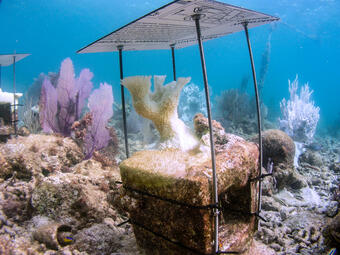Bleached Elkhorn coral now under shade in Biscayne National Park
Bleached Elkhorn coral now under shade in Biscayne National ParkShown here is a small colony of the threatened Elkhorn coral, Acropora palmata, that has become "bleached," that is, lost all its algal symbionts (also called zooxanthellae) because of the summer 2023 ocean-heat wave. The coral is attached to a cement block as part of the U.S.









